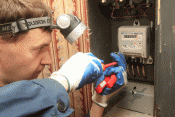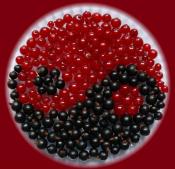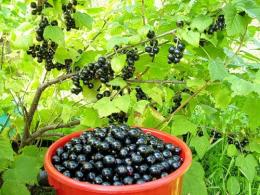Search
Login
Recommended
Currant: currant disease, currant pests. Ways to combat diseases and pests
Currant is an extremely healthy berry, it has high palatability, it can be consumed fresh and canned, dried and frozen. But only those who want to grow this wonderful berry on their plot will have to master not only the basic principles of planting, cultivation and reproduction. You will also need to study the recommendations of agronomists and learn how to deal with diseases and pests of currants, which can damage the bushes. It should be noted that there are not a few of them - more than seventy species.
Content
- Currant diseases, which are often fought
- Prevention and treatment
- Pests video video
- Diseases and pests of currant: we take the necessary preventive measures
Diseases of blackcurrant, which most often have to be fought
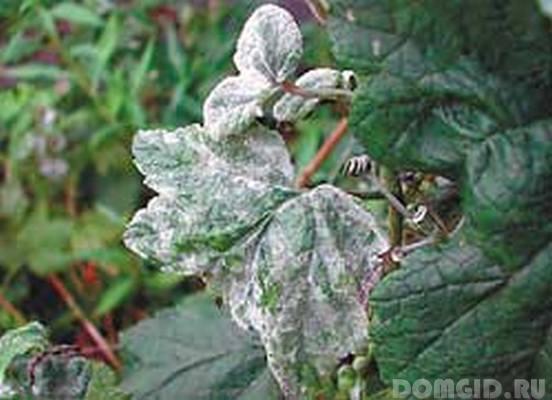
Powdery mildew - It is from her that young shoots, leaves and berries are most often affected. The disease has a fungal origin, manifests itself as a grayish or powdery coating, over time it darkens, becomes black. As a result of the disease, shoots, leaves and berries dry up. Young, actively growing bushes are especially affected by powdery mildew.
Powdery mildew is distributed by conidia spores, wintering of the fungus occurs in the fruiting bodies formed by it, they look like dark dots on branches. The fungus cannot penetrate into the cells of the plant, but being on the surface of branches or leaves grows into their structure with the help of haustoria and sucks out moisture and nutrients.
Excessive amounts of nitrogen fertilizers introduced into the soil can contribute to the active infection of American powdery mildew.
Fly-neighbor or currant anthracnose is also a fungal infection, which can be caused by an excessively humid climate. From the appearance of brown spots and the further development of foci of formation of summer spores on them, in most cases the leaves suffer. Anthracnose develops rapidly, leading to browning and drying of the leaves even in the summer. Green branches and fruits are more affected. Ill plants become weak, lose frost resistance, and reduce productivity. The pathogenic fungus spends wintering on fallen leaves.
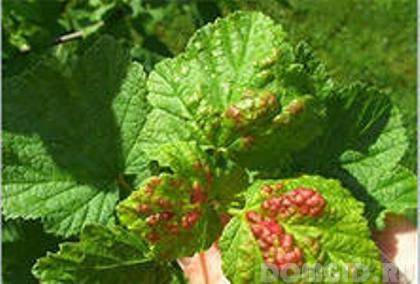
Rustinfecting bushes can be stem or goblet, which is much more common. It is manifested by the formation on the leaves of orange growths-pads. Most often, plants become infected in infected areas in the presence of excess moisture in the spring. The leaves and fruits of the currant suffer - they become stained and crumble.
An effective preventive measure against both types of rust is the drainage of the terrain, especially the swamps overgrown with sedge - it is on this pathogenic spores that winter.
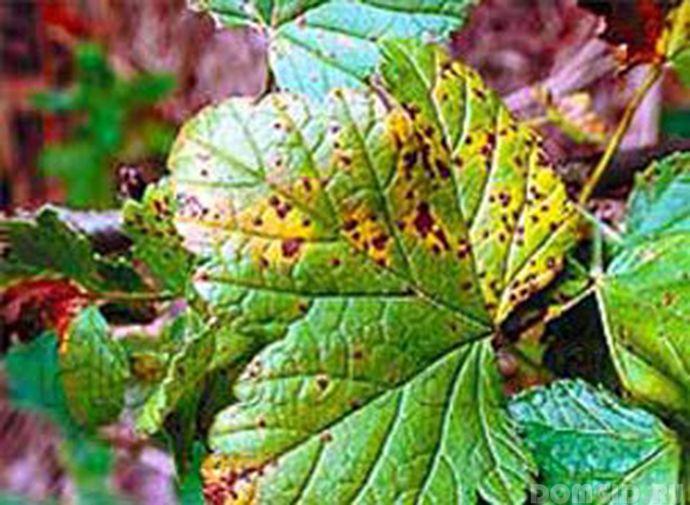
Septoriaotherwise, white spotting leads to the appearance of grayish spots with brown border on the leaves. Then on the affected areas appear black balls with spores. Their further development leads to drying and falling of berries and leaves. The causative agent of septoria is wintering on fallen leaves of the plant.
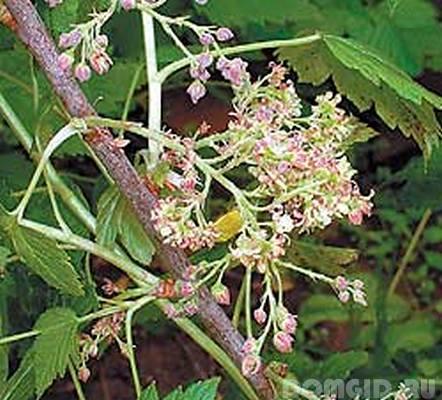
The most dangerous currant disease is considered terry. It changes the shape of the leaves and inflorescences, the plant loses its characteristic pleasant smell. The development of the disease leads to the appearance of an unnaturally large number of branches and a decrease in yield. Sick plants under favorable weather conditions can give a relatively good harvest, but they cannot recover.
The disease spreads in the conditions of one site by means of kidney currant mites. Also, cuttings taken from infected plants can become the cause of the appearance of terry. To some extent, the spread of the disease can be stopped by partial pruning of branches.
Prevention and treatment
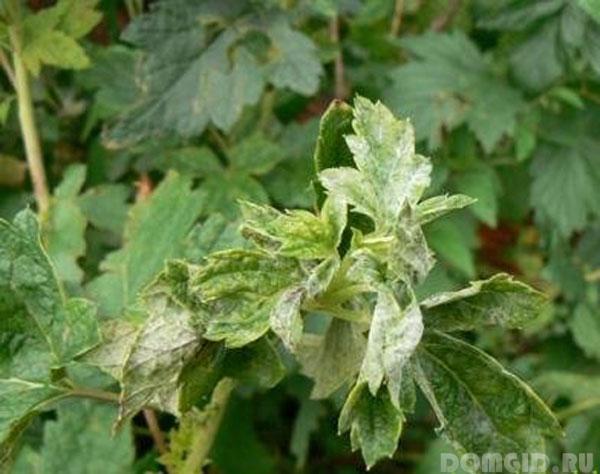
An effective prophylactic against fungal diseases may be the treatment of bushes with nitrofen solution in early spring. Terry plants are easiest to calculate by improperly developing flowers. Sick branches, and in case of severe damage - bushes completely, it is recommended to remove from the site.
Subsequent treatment for fungal diseases of currants is done at the end of flowering. Fungicides are used in combination with chemicals to kill pests. You can apply a 1% solution of Bordeaux mixture. The next spraying with fungicide solutions is carried out after two weeks, then after harvesting the berries.
To get rid of American powdery mildew, 2-3-fold spraying of bushes with a solution of soda ash or ammonium nitrate is required, additional processing is done after harvesting the berries. No less effective is the deep digging of the soil around the bushes, cleaning and burning of fallen leaves, pruning of diseased shoots.
Knowing how to process currants in the spring from pests and diseases, you can save the plants and get a good harvest.
Pests
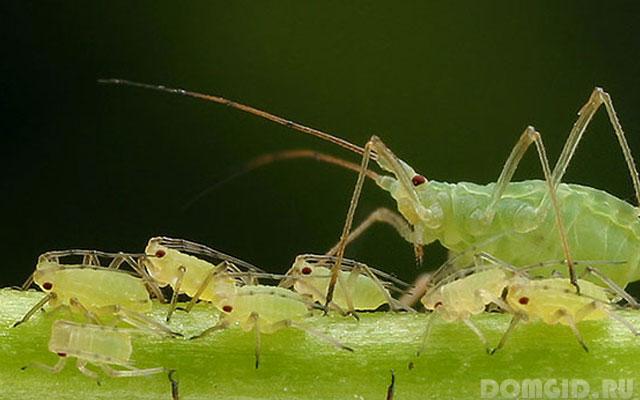
The most numerous enemies of currant are aphids: gall leaf and gooseberry shoot. Both species hibernate directly on the branches of plants, wake up at the moment when the development of the kidneys begins. Over the summer, several numerous generations of aphids that damage leaves and young shoots are bred.
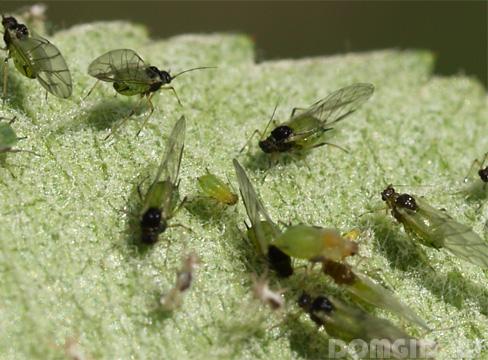
The last generation in the season has representatives of both sexes, females lay eggs, the larvae of which appear next spring.
Plants affected by aphids are distinguished by twisted leaves that are lagging behind in development, twisted shoots.
Diseases of red currant and its pests are not much different from those that are observed on black and white varieties. But gall leaf aphid more often affects precisely red and white currants. Plants suffer from red growths on the leaves, their premature shedding.
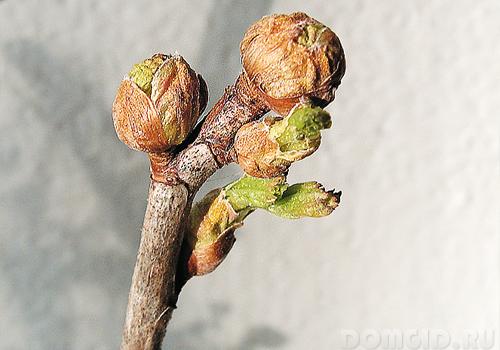
Currant kidney tick It affects the still not opened buds of the plant, causing their death. As the kidneys die, ticks spread further down the branches. When examined through a magnifying glass, thousands of these small pests can be found in a dead kidney. Moving to healthy kidneys, ticks carry such a disease as black terry on them. The fight against the kidney tick will be most effective precisely during the period of transition of ticks, this occurs within a month after the death of the first kidneys.
No less harm to plants can bring spider mites. In winter, female ticks spend under the fallen leaves, in spring they climb onto branches and damage the leaves. It is impossible to notice tick larvae with the naked eye. The development of the pest contributes to warm, dry weather. The first signs of damage become noticeable in May: the leaves turn yellow, dry out.
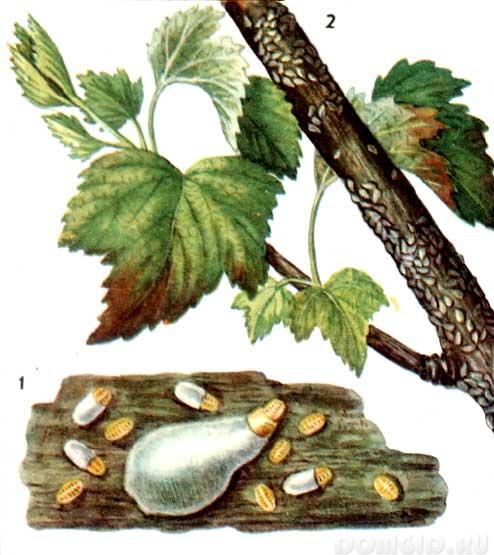
Next pest scale shield, there are several types: willow, acacia pseudoscutis, comma. The activity of the pest leads to the death of branches and shoots: the scab, sitting on them, feeds on the plant's juices. Types of scale insects differ somewhat in appearance, shape and size, but they have a similar method of obtaining food and life cycles. Scutellum overwinter in the phase of larvae, which can move into cracks protected from frost and wind in the cortex. With the onset of spring heat, scale insects creep to young branches. A clear sign of the presence of false scabs on the currant can be considered the appearance of sugary secretions on leaves affected by soot fungus.
Plant shoots can be severely affected by damage gall midge currant, its mass appearance can cause the death of bushes. The pest overwinters in the soil, the invasion of the flower gall midge begins during the budding period of the plant, leaf and shoot - during the flowering period of the currant.
A pest develops in several generations, deposited under the bark of a plant, gall midge eggs, upon transition from the larval stage, lead to the death of the bark. When inspecting the branches, you can notice the habitats of the larvae - by dark sunken spots.
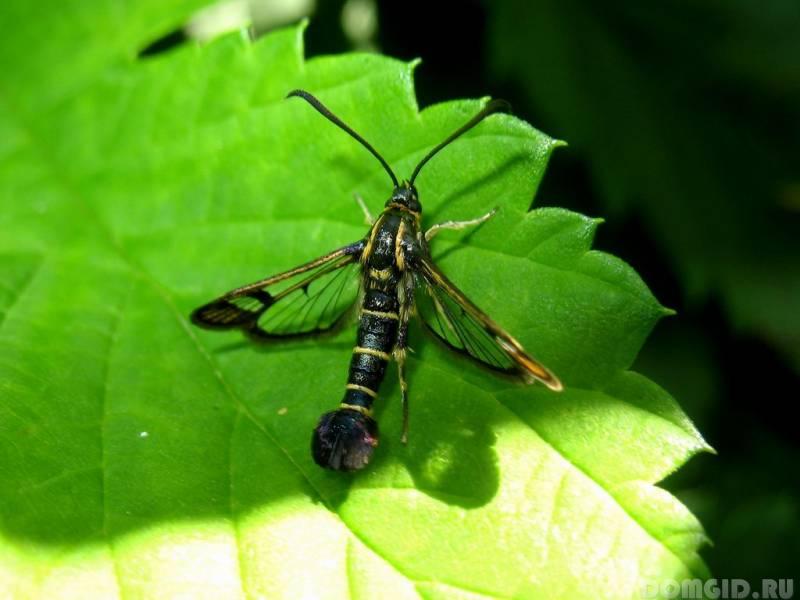
Leaf gall midge destroys young leaves, its presence leads to the cessation of shoot growth or their abnormal branching. A gall midge is being pupated in the upper soil layer.
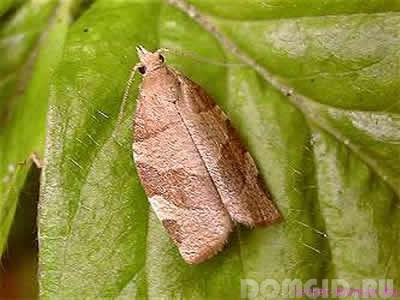
The larvae of the flower currant gall midge damage the buds, lead to their abnormal growth. The defeat of plants by gall midges leads to a significant decrease in plant productivity.
Gnawing pests - in this group you can combine currant glass-box, ognevka, leaf sawflies, currant kidney moth. Currant glass-case - a butterfly that lays eggs on currant branches, its larvae penetrate through the defects of the bark into the branches and make passages in their core. Naturally, such branches soon die. The adult caterpillar is large enough - up to 2.5 cm. A glass-box in the form of a caterpillar wintered inside the branches overwintering, in spring it gets out and turns into a pupa.
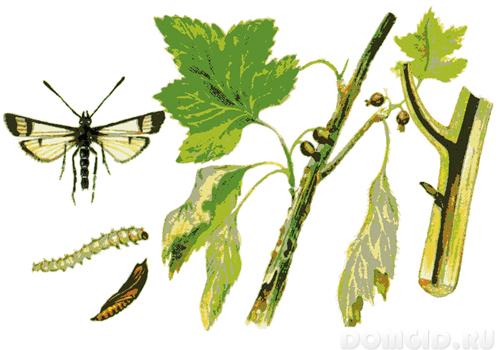
The most common gnawing pest is firebox. A clear sign of the destruction of the ognevka is the dried berries entangled in a web. Caterpillars are quite voracious and each of them can spoil a considerable number of berries. The chrysalis pup winters in the ground, in spring, before flowering, it turns into a butterfly, flies out and lays eggs inside the flowers or on young leaves.
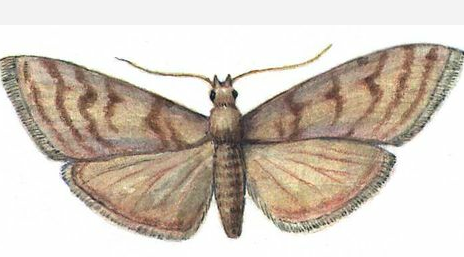
The caterpillar of the moth reaches 2 cm in length, having penetrated into the ovary, it destroys its flesh and seeds.
The leaves of red and black currants can damage the larvae of pale and yellow sawfly. Appearing in large numbers, gooseberry sawfly can eat all the leaves on the bush in just a couple of days. Its large larva, about 18 mm, spends winter in cocoons, in the ground under bushes.
The faces of the pale sawfly are smaller, up to 10 mm long. With favorable weather, 3 generations of the pest may appear during the season, the second generation is most dangerous for the bushes.

Large caterpillar, up to 4 cm in size, mothcan appear in large quantities and cause significant damage to herbs and fruits.
White and red currants may suffer from kidney moth. Most often, it damages early varieties. If the caterpillars appeared massively, then they can completely destroy all the buds and leaves. The tracks are about 8 mm long. Young caterpillars remain wintering, settling in cocoons at the base of the lower branches.
Diseases and pests of currant: take preventive measures
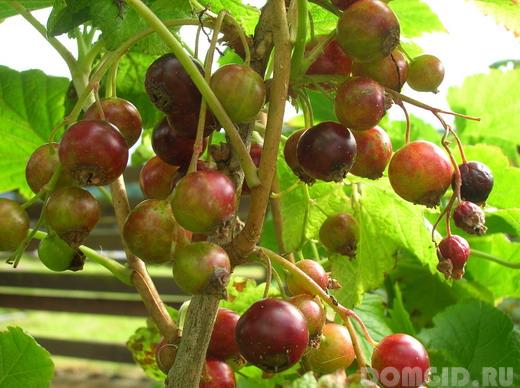
- Since planting material is the main source of the spread of diseases and pests, you should carefully consider its quality when buying. If the cuttings are made independently, then the material should be taken only from healthy plants.
- Given that most pests winter in the ground or under leaves that showered from the bush, it is advisable to remove the showered leaves and burn them in late autumn, and it is advisable to dig them deep under the bushes.
- Branches affected by shields or false shields should be cut and burned, if the infection is not strong - just pluck the affected kidneys.
- Cut and burn branches affected by stem gall midges.
- An effective control measure is the treatment with pesticides. If the stage of plant development does not allow the use of chemicals, then measures of physical extermination of pests can be used, for example, sawfly larvae are shaken off onto a fabric or film, then collected.
- A good preventive measure is repeated loosening of the soil during the summer season.
- It is also necessary to remove from the branches all spider web nests with caterpillars of the muzzle.
